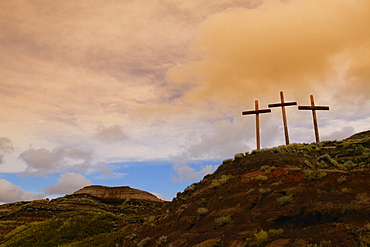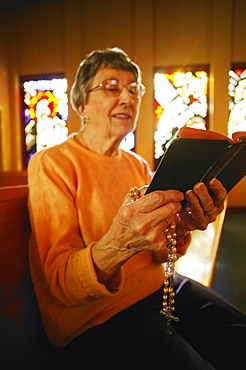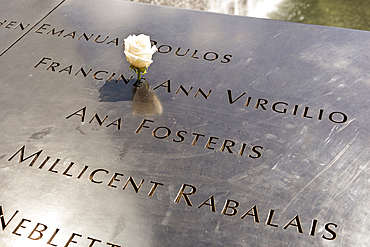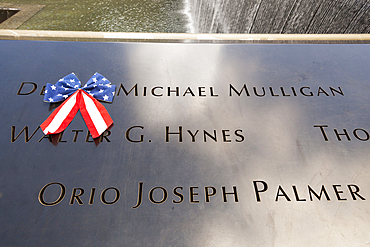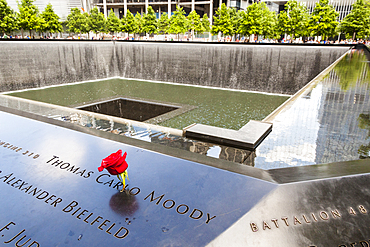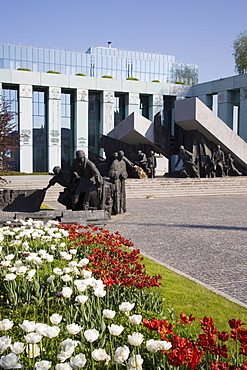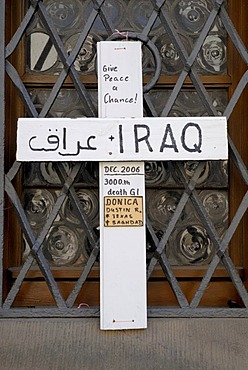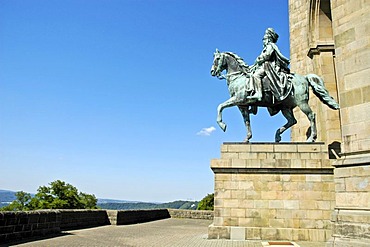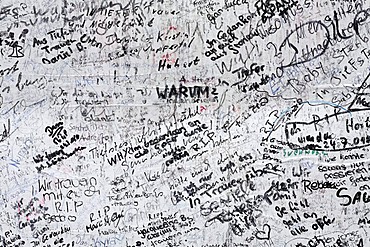Recent searches
Loading...
832-404167 - Contemplative mysterious african american woman standing amidst the cotton field. generative AI
832-404168 - Contemplative mysterious african american woman standing amidst the cotton field. generative AI
832-404166 - Contemplative mysterious african american woman standing amidst the cotton field. generative AI
832-404165 - Contemplative mysterious african american woman standing amidst the cotton field. generative AI
832-404164 - Contemplative mysterious african american woman standing amidst the cotton field. generative AI
832-403362 - Monument of Encounter, commemorates the meeting of Soviet and American soldiers in 1945 on the Elbe, Torgau, Saxony, Germany, Europe
1116-52313 - Woman Reading Bible & Holding Rosary Beads
1350-4891 - Names of September 11 2001 victims, National September 11 Memorial, World Trade Center, Manhattan, New York City, New York, USA
1350-4897 - Names of September 11 2001 victims, National September 11 Memorial, World Trade Center, Manhattan, New York City, New York, USA
1350-4819 - One of the two waterfalls at National September 11 Memorial, World Trade Center, Manhattan, New York City, New York, USA
1350-2688 - Verges, a small town in the Northeast of Catalonia (Spain), during Easter celebrates the Procession of Verges with skeletons dancing on the sound of a drum, Roman soldiers, known as the 'Manages', and a representation of the life and crucifixion of Jesus Christ. The Procession features the Dance of Death, a tradition from the Middle Age associated with epidemics and plagues and the only one remaining in Spain Ten skeletons dance to the beat of a drum to remember that no one is exempt of death. The backdrop of the medieval walls and towers of Verges is key to this macabre staging.
1350-2693 - Verges, a small town in the Northeast of Catalonia (Spain), during Easter celebrates the Procession of Verges with skeletons dancing on the sound of a drum, Roman soldiers, known as the 'Manages', and a representation of the life and crucifixion of Jesus Christ. The Procession features the Dance of Death, a tradition from the Middle Age associated with epidemics and plagues and the only one remaining in Spain Ten skeletons dance to the beat of a drum to remember that no one is exempt of death. The backdrop of the medieval walls and towers of Verges is key to this macabre staging.
1350-2692 - Verges, a small town in the Northeast of Catalonia (Spain), during Easter celebrates the Procession of Verges with skeletons dancing on the sound of a drum, Roman soldiers, known as the 'Manages', and a representation of the life and crucifixion of Jesus Christ. The Procession features the Dance of Death, a tradition from the Middle Age associated with epidemics and plagues and the only one remaining in Spain Ten skeletons dance to the beat of a drum to remember that no one is exempt of death. The backdrop of the medieval walls and towers of Verges is key to this macabre staging.
1350-2695 - Verges, a small town in the Northeast of Catalonia (Spain), during Easter celebrates the Procession of Verges with skeletons dancing on the sound of a drum, Roman soldiers, known as the 'Manages', and a representation of the life and crucifixion of Jesus Christ. The Procession features the Dance of Death, a tradition from the Middle Age associated with epidemics and plagues and the only one remaining in Spain Ten skeletons dance to the beat of a drum to remember that no one is exempt of death. The backdrop of the medieval walls and towers of Verges is key to this macabre staging.
1350-2690 - Verges, a small town in the Northeast of Catalonia (Spain), during Easter celebrates the Procession of Verges with skeletons dancing on the sound of a drum, Roman soldiers, known as the 'Manages', and a representation of the life and crucifixion of Jesus Christ. The Procession features the Dance of Death, a tradition from the Middle Age associated with epidemics and plagues and the only one remaining in Spain Ten skeletons dance to the beat of a drum to remember that no one is exempt of death. The backdrop of the medieval walls and towers of Verges is key to this macabre staging.
1350-2691 - Verges, a small town in the Northeast of Catalonia (Spain), during Easter celebrates the Procession of Verges with skeletons dancing on the sound of a drum, Roman soldiers, known as the 'Manages', and a representation of the life and crucifixion of Jesus Christ. The Procession features the Dance of Death, a tradition from the Middle Age associated with epidemics and plagues and the only one remaining in Spain Ten skeletons dance to the beat of a drum to remember that no one is exempt of death. The backdrop of the medieval walls and towers of Verges is key to this macabre staging.
1350-2687 - Verges, a small town in the Northeast of Catalonia (Spain), during Easter celebrates the Procession of Verges with skeletons dancing on the sound of a drum, Roman soldiers, known as the 'Manages', and a representation of the life and crucifixion of Jesus Christ. The Procession features the Dance of Death, a tradition from the Middle Age associated with epidemics and plagues and the only one remaining in Spain Ten skeletons dance to the beat of a drum to remember that no one is exempt of death. The backdrop of the medieval walls and towers of Verges is key to this macabre staging.
1350-2689 - Verges, a small town in the Northeast of Catalonia (Spain), during Easter celebrates the Procession of Verges with skeletons dancing on the sound of a drum, Roman soldiers, known as the 'Manages', and a representation of the life and crucifixion of Jesus Christ. The Procession features the Dance of Death, a tradition from the Middle Age associated with epidemics and plagues and the only one remaining in Spain Ten skeletons dance to the beat of a drum to remember that no one is exempt of death. The backdrop of the medieval walls and towers of Verges is key to this macabre staging.
1350-2696 - Verges, a small town in the Northeast of Catalonia (Spain), during Easter celebrates the Procession of Verges with skeletons dancing on the sound of a drum, Roman soldiers, known as the 'Manages', and a representation of the life and crucifixion of Jesus Christ. The Procession features the Dance of Death, a tradition from the Middle Age associated with epidemics and plagues and the only one remaining in Spain Ten skeletons dance to the beat of a drum to remember that no one is exempt of death. The backdrop of the medieval walls and towers of Verges is key to this macabre staging.
1350-2697 - Verges, a small town in the Northeast of Catalonia (Spain), during Easter celebrates the Procession of Verges with skeletons dancing on the sound of a drum, Roman soldiers, known as the 'Manages', and a representation of the life and crucifixion of Jesus Christ. The Procession features the Dance of Death, a tradition from the Middle Age associated with epidemics and plagues and the only one remaining in Spain Ten skeletons dance to the beat of a drum to remember that no one is exempt of death. The backdrop of the medieval walls and towers of Verges is key to this macabre staging.
1350-2694 - Verges, a small town in the Northeast of Catalonia (Spain), during Easter celebrates the Procession of Verges with skeletons dancing on the sound of a drum, Roman soldiers, known as the 'Manages', and a representation of the life and crucifixion of Jesus Christ. The Procession features the Dance of Death, a tradition from the Middle Age associated with epidemics and plagues and the only one remaining in Spain Ten skeletons dance to the beat of a drum to remember that no one is exempt of death. The backdrop of the medieval walls and towers of Verges is key to this macabre staging.
1178-37177 - Mother carrying son in field of wheat at sunset
252-11082 - Monument to the Warsaw Uprising (Pomnik Powstania Warszawskiego), unveiled in 1989 on the 45th anniversary of the uprising, Warsaw, Poland, Europe
252-11081 - Monument to the Warsaw Uprising (Pomnik Powstania Warszawskiego), unveiled in 1989 on the 45th anniversary of the uprising, Warsaw, Poland, Europe
1116-46330 - Day Of The Dead Celebrations, Oaxaca, Mexico
1178-12502 - Statue of Ho Chi Minh at City Hall Ho Chi Minh City Saigon Vietnam
1178-6524 - Statue of Ho Chi Minh at City Hall Ho Chi Minh City Saigon Vietnam
1178-2763 - Arlington National Cemetery Washington DC USA
1178-2764 - Arlington National Cemetery Washington DC USA
1178-2762 - Arlington National Cemetery Washington DC USA
1178-2188 - Arlington National Cemetery Washington DC USA
367-5976 - Ceramic poppies forming the installation Blood Swept Lands and Seas of Red to remember the Dead of the First World War, Tower of London at dusk, London, England, United Kingdom, Europe
367-5977 - Ceramic poppies forming the installation Blood Swept Lands and Seas of Red to remember the Dead of the First World War, Tower of London, London, England, United Kingdom, Europe
832-343223 - Memorial to the Murdered Jews of Europe in the german capital Berlin Germany
832-347717 - Plague column, Wallerstein, Swabia, Bavaria, Germany
832-338543 - Plaque commemorating Queen Victoria's 60th birthday, house facade in Atherstone, Warwickshire, West Midlands, England, Europe
832-331450 - Memorial on the Nikolai Church, Leipzig, Saxony, Germany
832-319937 - English military cemetery, Cologne, North Rhine-Westphalia, Germany
832-319947 - Gravestones, military cemetery, Cologne, North Rhine-Westphalia, Germany
832-319948 - Rose between gravestones, english military cemetery, Cologne, North Rhine-Westphalia, Germany
832-319946 - Memorial stone, english military cemetery, Cologne, North Rhine-Westphalia, Germany
832-313877 - The wreck of a shot down military plane of World War 2, Palau, Micronesia
832-313809 - Column in front of the Leipzig, Saxony, Germany
832-313876 - The wreck of a shot down military plane of World War 2, Palau, Micronesia
832-302721 - Three crosses, soldier's cemetery, Maleme, Crete, Greece
832-295138 - Fishermans Bastion with the equestrian Memorial of Saint Stephen King of Ungary, Budapest, Hungary, Southeast Europe, Europe,
832-295300 - Memorial of Zar Alexander I. Moscow, Russia, East Europe, Europe
832-295298 - Memorial of Zar Alexander I. Moscow, Russia, East Europe, Europe
832-295259 - New Maiden Monastery, Bust of a grave, Moscow, Russia, East Europe, Europe
832-295121 - Heros Square with Millenium Memorial and the horseman Memorial from Prince Arpad, Budapest, Hungary, Southeast Europe, Europe,
832-295123 - Heros Square with Millenium Memorial and the horseman Memorial from Prince Arpad, Budapest, Hungary, Southeast Europe, Europe,
832-295122 - Heros Square with Millenium Memorial and the horseman Memorial from Prince Arpad, Budapest, Hungary, Southeast Europe, Europe,
832-295120 - Heroes Square with Millenium Memorial and the horseman Memorial from Prince Arpad, Budapest, Hungary, Southeast Europe, Europe,
832-284138 - Bomb dummy which points out that NZ is an tomic free area, Gunns Camp, Holyford valley, South Island, New Zealand
832-282399 - War memorial, Vinsebeck, Steinheim, North Rhine-Westphalia, NRW, Germany
832-281591 - Emperor Wilhelm Memorial, Rellinghausen, Essen, Ruhrgebiet, North Rhine-Westphalia, Germany
832-281513 - Memorial for the ones lost at sea, Katwijk aan Zee, South Holland, Holland, The Netherlands
832-281444 - Emperor William memorial on the Hohensyburg, Dortmund, Ruhr Basin, NRW, Northrhine - Westphalia, Germany, national memorial, cultural history
832-281589 - Emperor Wilhelm Memorial, Rellinghausen, Essen, Ruhrgebiet, North Rhine-Westphalia, Germany
832-281590 - Emperor Wilhelm Memorial, Rellinghausen, Essen, Ruhrgebiet, North Rhine-Westphalia, Germany
832-281549 - Monument of Archbishop Engelbert II, Earl of Berg, Castle Burg, Solingen, Bergisches Land, North Rhine Westphalia, Germany
832-281728 - War monument, Rhine promenade, Duesseldorf, North Rhine-Westphalia, Germany
832-281533 - Potter's market on the Sparrenbug, Bielefeld, Teutoburger Wald, North Rhine-Westphalia, Germany
832-361844 - Visitors at the Holocaust Memorial in Berlin, Germany, Europa
1161-7729 - War Memorial to commemorate the local dead of World War I in the French town of Trelly in Normandy, France
1161-6612 - Graves at Lisdeen christian graveyard near Kilkee, County Clare, West of Ireland
832-229705 - Cement squares, steles of the Holocaust Memorial, Mitte district, Berlin, Germany, Europe
1161-2014 - The Women of World War II memorial in Whitehall, London, United Kingdom
990-138 - The Humpback whales (Megaptera novaeangliae) named Tic-Tac-Toe and Siam diving in close proximity to kayakers who will certainly always remember this very special encounter with these giants. The absence of an engine might make it difficult for whales to perceive kayakers. St. Lawrence estuary, Canada
832-145851 - Hundreds of candles to remember the victims of the crowd crush at the Loveparade 2010, Duisburg, North Rhine-Westphalia, Germany, Europe
832-145862 - Poster with sympathetic notes and signatures, to remember the victims of the crowd crush at the Loveparade 2010, Duisburg, North Rhine-Westphalia, Germany, Europe
832-145861 - Poster with sympathetic notes and signatures, to remember the victims of the crowd crush at the Loveparade 2010, Duisburg, North Rhine-Westphalia, Germany, Europe
832-145855 - Teddy between candles to remember the victims of the crowd crush at the Loveparade 2010, Duisburg, North Rhine-Westphalia, Germany, Europe
817-418990 - postcards from Geneva, souvenir retail shop in Geneva, Switzerland
817-415223 - Stax Museum Soul Music Memphis Tennessee TN
817-415224 - Stax Museum Soul Music Memphis Tennessee TN
817-415222 - Stax Museum Soul Music Memphis Tennessee TN
817-415229 - Graceland Museum Elvis Presley Mansion Memphis Tennessee TN
817-412910 - Confederate Monument Jackson, Mississippi, United States of America
817-412918 - Mississippi War Memorial BuildingJacksoi MS US
817-415179 - Lorraine Motel Martin Luther King Assassination Memphis Tennessee TN
817-415178 - Lorraine Motel Martin Luther King Assassination Memphis Tennessee TN
817-412920 - Medgar Evers Home Jackson, Mississippi, United States of America
817-415227 - Stax Museum Soul Music Memphis Tennessee TN
817-412915 - Sculpture Mississippi War Memorial BuildingJacksoi MS US
817-412917 - Mississippi War Memorial BuildingJacksoi MS US
817-412916 - Mississippi War Memorial BuildingJacksoi MS US
817-415204 - Sun Records Music Studio Elvis Presley Memphis Tennessee TN
817-412914 - Spanish American War Monument Jackson, Mississippi, United States of America
817-412919 - Medgar Evers Statue Jackson, Mississippi, United States of America
817-415225 - Stax Museum Soul Music Memphis Tennessee TN
817-415226 - Stax Museum Soul Music Memphis Tennessee TN
817-415180 - Courtyard Cars Lorraine Motel Martin Luther King Assassination Memphis Tennessee TN
817-415205 - Sun Records Music Studio Elvis Presley Memphis Tennessee TN
817-412288 - Statue to remember the Alamo famous historical event in San Antonio Texas USA








